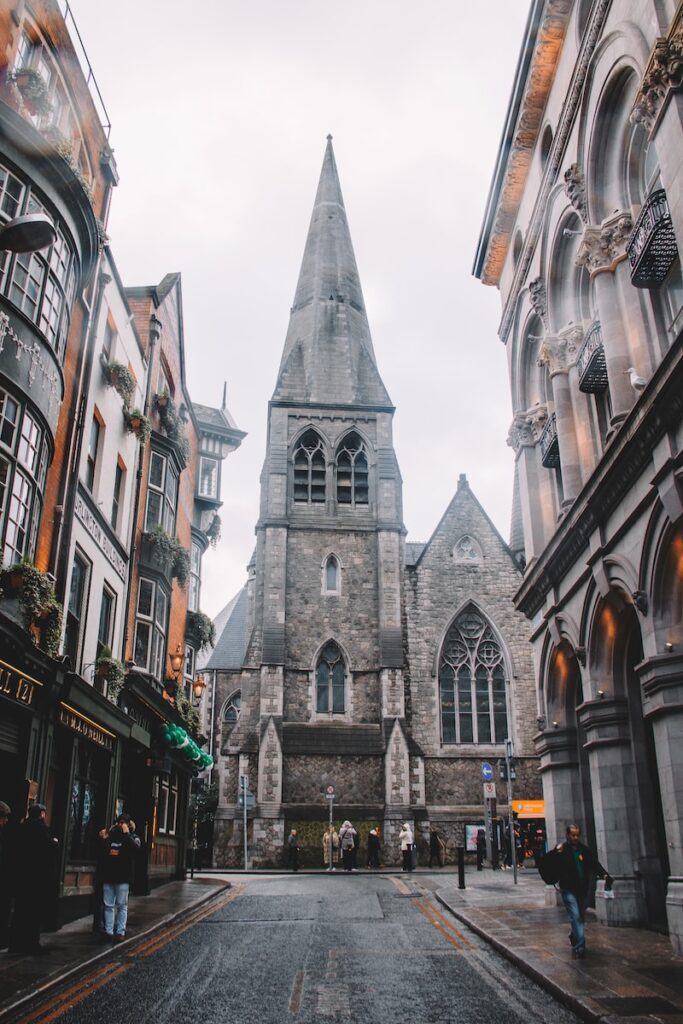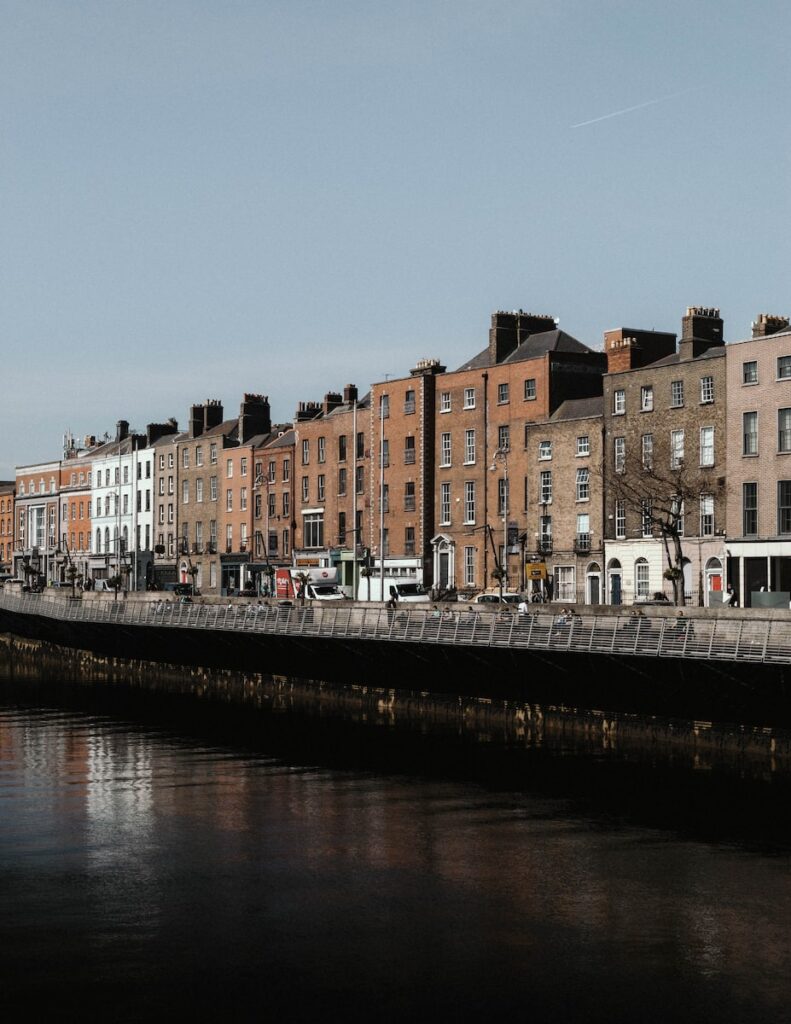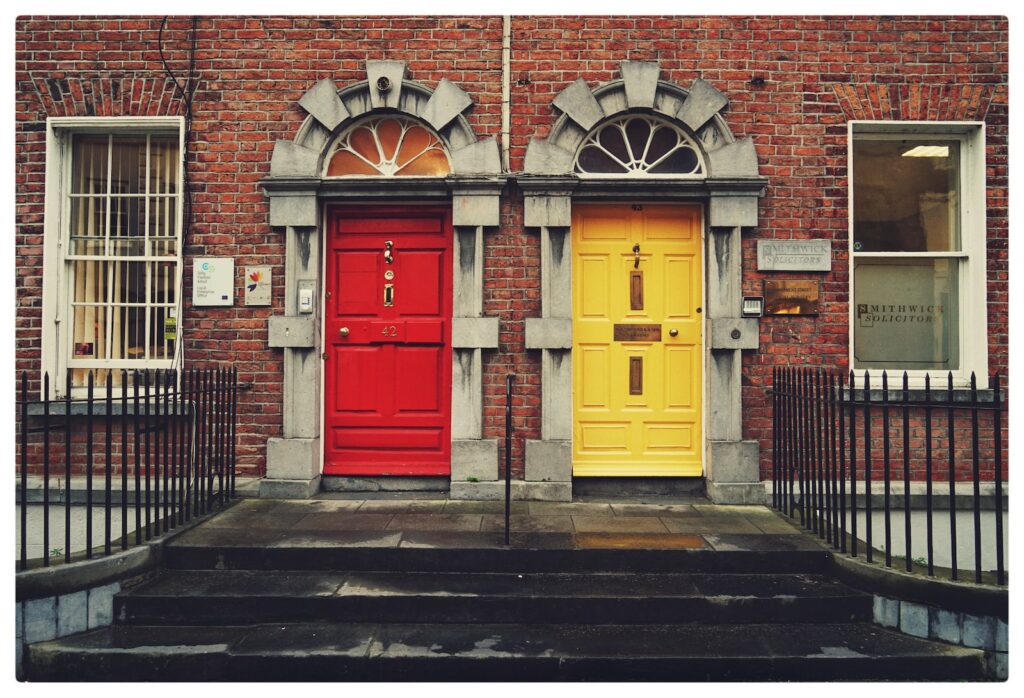Best Neighborhoods in Dublin: Discover the Nicest Areas to Live in the City
Considering moving to Dublin, Ireland? Looking for the best districts in Dublin for expats?
We’ve brought you a simple guide to the often complicated geography of the city, including the center, its outskirts and those indefinable little areas which straddle the two. If you’re planning to relocate, we’ve crammed this article with helpful details on the best neighborhoods in Dublin – and why you should consider living in them even for temporary or short visits.
For years, Dublin has been a popular relocation hub for people from all over the world, and from all over Ireland. Around 1.2 million live in Dublin, which is more than 25% of the entire country’s inhabitants. In short, it’s a busy city packed with a diverse cast of people and places, and it’s full to the brim with residents from around the world. Whatever type of life you’re looking for, Dublin can give it to you.
Understanding Dublin's Districts: A Quick Recap
Dublin is divided in a number of ways. Firstly, it’s literally divided by the vast Liffey River, which cuts the iconic city in two, leaving Dublin with a north side and a south side. It’s also divided into 24 separate postal districts. But beyond these postal districts, Dublin is then further divided into even smaller areas and neighborhoods.
Some of these Dublin neighborhoods are still referred to by their postal districts, while most areas are now referred to by name. But whatever you call them, all of these separate neighborhoods and areas offer distinctly different atmospheres.
We’ve included information on the best neighborhoods in Dublin for families, students and expats of all other descriptions – and details on the most affordable districts in Dublin, for anyone relocating on a budget.
No matter who you are and why you want to move to Dublin, we’ve got the perfect place for you to live. Whether you want a home, a house share or a rented apartment in the city, here are the best boroughs in the city for expats and everyone else…
10 Best Places to Live in Dublin at a Glance
North Inner City
City Center South
Portobello
Ranelagh
Rathmines
D4
Docklands
Dundrum
Drumcondra
Dalkey
1. Stoney Batter
Best for: A fantastic food scene, creative art studios and more affordable homes
Buckle up and let’s take a virtual stroll down the lanes of Stoney Batter, Dublin’s hippest neighborhood. It is a historic place that’s known for its unique character and charm.
The area was once home to working-class families who lived in the rows of red-brick terraced houses that still line the streets today. Many of these houses have been restored and renovated in recent years, giving Stoneybatter a mix of old-world charm and modern flair.
One of the highlights of Stoneybatter is its fantastic food scene. The neighborhood is home to a number of funky pubs, trendy cafes and restaurants that serve up delicious cuisine from all over the world. Whether you’re craving traditional Irish fare or something more exotic, you’re sure to find it here.
Stoneybatter also has a rich cultural history. The area was once a hub for trade and industry, with many warehouses and factories located along the nearby Royal Canal. Today, these buildings have been repurposed into artists’ studios and creative spaces, adding to the neighborhood’s bohemian vibe.
Visitors to Stoneybatter can explore the historic Smithfield Market Square or take a stroll through Phoenix Park, one of Europe’s largest urban parks. And if you’re looking for some nightlife, there are plenty of cozy pubs where you can enjoy a pint or two while listening to live music.
2. North Inner City
Best for: city center living, a fantastic food scene and residing right in the heart of Dublin
A wide area north of the Liffey river, this Dublin neighborhood is the D1 district, so you can’t get any more central. If you want to live in the very center of Dublin, your options are here and City Center South. The North Inner City is a little more affordable and a little more working class than its southern counterpart, but more on that later.
Stepping into Dublin’s North Inner City feels like stepping into a living, breathing postcard of Irish heritage. This district, with its storied past and dynamic present, is a magnet for those seeking an authentic Dublin experience.
Despite its central location, North Inner City is surprisingly gentle on the wallet. Accommodation here tends to be more affordable than many other areas of Dublin, making it an attractive option for expats or anyone looking to make their home in the Irish capital.
The North Inner City is home to some of Dublin’s most exciting food, with excellent cafes and restaurants, while famous tourist attractions here include The Irish Emigration Museum, plenty of bridges and the National Leprechaun Museum (no, that’s not a joke). This part of the city stretches right to the sea, and incorporates some of the Docklands along with the Liffey and the Royal Canal.
You won’t find many residential areas or good schools here, but if you want to live in Dublin short-term or see the city through the eyes of a tourist, living in the North Inner City is an excellent option.
While some pockets of the North Inner City have a slight reputation for being a little unsafe, that’s largely no longer the case. The North Inner City offers all the pros and cons which are always offered by big inner city neighborhoods – you get great nightlife, excellent eateries and endless action. But you also get soaring prices, never-ending noise and very few green spaces.
And let’s not forget about the community spirit that North Inner City exudes. There’s always a local event or festival happening, and the locals? Well, they’re some of the friendliest folks you’ll ever meet.
3. City Center South
Best for: a central location, non-stop nightlife and living like a tourist
Dublin City Centre South, or as the locals fondly call it, Dublin 2, is a fascinating blend of historical charm and modern flair. Picture this: you’re wandering down quaint, cobbled lanes lined with majestic Georgian buildings, when suddenly you come across a swanky boutique or a hip café brewing some seriously good coffee. It’s this delightful mix of past and present that gives Dublin 2 its unique character.
Entertainment? Dublin City Centre South has it in spades! This part of town plays host to some of the city’s top hotels, eateries, and stores. Whether you’re a culinary adventurer ready to taste the next big thing in food, a shopping enthusiast in search of one-of-a-kind finds, or a culture buff eager to immerse yourself in local art, music, and literature, Dublin 2 has you covered.
Though City Center South is a very small district, there’s plenty squeezed into its relatively humble confines. If you’re planning on being in Dublin only for a short amount of time and you want to explore it just like a tourist, this is absolutely the best area to live. Here, you’re close to all the tourist action and fantastic nightlife, including the iconic Temple Bar, the must-visit haven of anyone keen to declare they’ve had a genuine pint of Guinness.
Other nearby attractions include Dublin Castle, The Book of Kells and the National Archaeology Museum.
Because it’s the center of Dublin’s tourist trade, City Center South is expensive, and prices for everything are high. But if you can afford the costs, and as long as you don’t mind endless crowds, City Center South is a great place to live.
City Center South is also one of the best districts in Dublin for students, with a young population, lots of university buildings and plenty of places to slurp on some drinks. If you’re a student seeking a hedonistic dose of Dublin, consider living in City Center South.
If you’re moving to Dublin with a family, the City Center South will likely be too lively and noisy for you. But for students, young professionals and short-term stays, it’s an excellent choice.

4. Portobello
Best for: students, hipsters and student hipsters
Beside D2 is D8. And inside D8 is Portobello, one of the trendiest areas in the entirety of Dublin. It’s one of the best districts in Dublin for expats who want to explore the artier aspects of the city. Trendy, happening and teeming with hipsters, Portobello is the home of yoga studios, avocado-laden brunch spots and moustached craft beer drinkers. You get bookshops, speciality food stores, edgy bars and a load of other bohemian venues.
Portobello is as close as you can get to the heart of the action without being right in the middle of it. It’s a trendy and cosmopolitan neighborhood, where hip cafés, cute boutiques, yoga studios, avocado-laden brunch spots and moustached craft beer drinkers share space with historic redbrick houses and period villas. One moment you’re sipping on craft coffee at a local café, the next you’re admiring the architectural beauty of a 19th-century villa.
At weekends, Portobello bustles with on-street drinkers, who cram around the area’s canal to sip their Saturdays away. This canal also offers an escape to a quieter life, as the districts south of Portobello (and its canal) mark the beginning of Dublin’s outskirts – and the beginning of the city’s residential areas.
Portobello is also close to lots of D8’s other attractions, including Christchurch Cathedral, St Patrick’s Cathedral and the Irish Jewish Museum. D8 itself is one of the oldest districts in the city, and lots of locals consider the neighborhood to be one of the most authentic parts of the city. If you want to live centrally without being right in the heart of the hustle and bustle, Portobello is an excellent choice.
Portobello is one of the best districts in Dublin for students, as the neighborhood and its surroundings are home to a young population who study at the nearby Trinity College.

5. Ranelagh
Best for: family life and cosy doses of central suburbia
Southeast of Portobello and on the other side of the Grand Canal is Ranelagh. Nestled inside the D6 district, Ranelagh has a very diverse population, crammed with locals and expats who’ve moved to Dublin for a whole host of reasons.
Ranelagh is one of the best districts in Dublin for families, as there are some excellent schools in the area. It also offers a fantastic family-friendly compromise between residential and central.
Though Ranelagh is very close (and well-connected) to all of Dublin’s central attractions, it feels like a small town of its own. Upmarket, leafy and liberally dotted with lots of beautiful homes, Ranelagh is a tree-lined haven which feels more like an urban village than a borough of a bigger city.
When it comes to food, Ranelagh is a culinary wonderland. This hip neighborhood, often likened to Brooklyn in New York, has transformed into a gastronomic paradise. From traditional Irish pubs serving comfort food to innovative restaurants presenting dishes from around the world, there’s no shortage of options for food lovers.
Ranelagh was home to some of the first suburban homes in Dublin, so it’s packed with stunning Victorian and Edwardian architecture. If you like gawping at other people’s homes, you’ll love doing it here. Ranelagh is pretty expensive (even by Dublin’s standards), but living here is definitely worth the lofty fees.
For similar atmospheres in a similar area, try Rathmines and Rathgar.
6. Rathmines
Best for: good schools, making friends and quirky hangouts
Bordering Ranelagh is Rathmines, which also sits in D6. What you get here is pretty similar to what you get in Ranelagh, though Rathmines is arguably a little more affordable and humble. Again, there are excellent schools in this area, making Rathmines one of the best districts in Dublin for families.
Rathmines is one of those places where you can feel the pulse of the city while also enjoying the laid-back vibe of a residential area.
A little bigger than Ranelagh, Rathmines boasts a bigger population, along with a huge number of residents from around the world, making Ranelagh one of the best neighborhoods in Dublin for expats. It’s also a great place for buddying up, as you’ll often find social events geared towards newcomers looking to make friends in the city.
Rathmines has a youthful spirit, thanks to the presence of the Rathmines College and numerous language schools. This influx of students adds a lively energy to the area, making it a hotspot for fun and entertainment.
Food enthusiasts won’t be disappointed either. Rathmines offers an impressive selection of eateries, from the casual Farmer Brown’s for brunch lovers to the exotic flavors at Hey Donna for dinner dates. And if you’re craving something sweet, the local bakery, The Bretzel Bakery, is a must-visit.
7. The Docklands
Best for: waterfronts, redevelopments and an eclectic combination of contemporary and classic
The Docklands crosses over the Liffey, making for an area which spreads over districts 1, 2 and 4. But although we’ve already covered those areas, The Docklands deserve an entry of its own.
A hub of redevelopment, the Docklands area is both modern and ancient, both glass facades and historic buildings. Here, you’ll find history and heritage sat beside illuminations, glass fronts and mega-modern buildings. This is gentrification done right. Once overlooked as a place to live, lots of expats and locals alike are making the move to live in Dublin’s Docklands. And it won’t be long before it becomes one of Dublin’s most popular relocation neighborhoods.
Culture vultures, you’re in for a treat! The Docklands is always buzzing with activity. Think water sports that get your heart racing, museums that take you back in time, and art galleries that make you think. And let’s not forget the 3Arena and Bord Gáis Energy Theatre, where you can catch some amazing performances.
If you like water, you’ll love living here. You have canals, Dublin Bay and the wide beginnings of the Liffey. It also bustles with boats, while the port runs regular services to various other parts of Europe.
Because of its waterfronts and classy modernity, the Docklands is a peaceful place to live, even though it’s very central. It’s a little pricey, but it’s worth the outlay if you can afford it. The Docklands is a pretty good pick for families, as it’s safe, central and relatively serene.

8. Dundrum
Best for: shopping, young people and homely residential life on the outskirts of the city
Another of the best neighborhoods in Dublin for families, and one of the most affordable districts in Dublin, Dundrum isn’t central but it’s got plenty going on. A sprawling neighborhood which crosses over districts 14 and 16, Dundrum is home to the biggest shopping center in Dublin.
It’s also a decent place for students, as University College Dublin is pretty close by. And because it’s home to good nightlife and a young population, there’s always somewhere to drink – and someone to do it with. Almost 40% of Dundrum’s population is between 18 and 34, so it’s brimming with young people.
Dundrum is a real draw for families. It’s residential, it’s quiet and it’s dripping with charm. But more than that, it has a cute town center, great green spaces and even an urban zoo. There are also an excellent selection of schools in the area. And although it’s on the city’s outskirts, it’s only a 20-minute tram trip into the center, making the neighborhood far from remote.
9. Drumcondra
Best for: families and young people who like pubs, green spaces and affordable living
Drumcondra is one of the most affordable districts in central Dublin, making it popular with families, students and young professionals.
Quietly nestled in D9, Drumcondra is packed with contradictions. It has a young population but a relatively quiet atmosphere. It has an excellent location but relatively affordable housing. And it offers excellent nightlife along with great proximity to some of the city’s best green spaces.
Close to canals, parks and the National Botanic Gardens, there are plenty of outdoor pursuits in Drumcondra, so it’s a great option if you want to live centrally without too much chaos and congestion.
It’s also a great area for drinking and dining, with lots of excellent eateries along with plenty of traditional pubs. Lots of the authenticity of Dublin’s pubs has been stripped away, but Drumcondra is home to lots of drinking dens which have proudly retained their charm.
Though Drumcondra is only a short hop from the very center of the city, it’s largely bereft of tourists, and prices are surprisingly affordable (or as affordable as they get in central Dublin).
10. D4
Best for: professionals, high-earners and mingling with the middle classes
One of the biggest districts in central Dublin, D4 is home to lots of the city’s upper-middle classes. It’s also home to many different neighborhoods, including Ballsbridge, Donnybrook and Sandymount.
On the south side of the river and east of D2, living in D4 is a good choice if you want to reside relatively centrally without being right in the middle of the city. But it does come as a price, as it’s definitely not one of the most affordable districts in Dublin.
The area is so synonymous with wealth that the term ‘D4’ is often used to refer to Dublin’s upper-middle classes, whether they live in the area or not. The area has also birthed a more ‘refined’ accent (whatever that means) which is relatively dissimilar to the other accents you’ll hear throughout Dublin.
In short, if you’re seeking a classy existence in Dublin, consider moving to the D4 district.
D4 also offers some nice slices of peace and tranquility. Here, you’ll find the Docklands, some great green spaces and the shoreline escape of Sandymount Beach.

11. Dalkey
Best for: rich people, outskirt life, and outdoor adventures
Our last entry is a somewhat of an outlier, both literally and thematically.
15km southeast of central Dublin is Dalkey, an affluent area with a reputation for soaring prices. People such as Bono, Van Morrison and Matt Damon have lived (or still live!) here, and it has a very different atmosphere to all the other entries on this list. Some people will love living here, while some people will hate it, but it’s one of Dublin’s most sought-after districts.
Peaceful, quiet and serene, it’s a great pick for those seeking a tranquil life. Because of this, it’s one of the best boroughs in Dublin for families.
But best of all, it’s an excellent neighborhood for anyone who likes outdoor adventures, sandwiched between rolling hills to the west and an excellent coastline to the east. Here, you get fresh air, great hikes, cliffside vistas and some of the best architecture in the whole of Dublin.
Finding Accommodation in Dublin
Whether you’re looking for a short-term rental, a long-term lease, or even planning to buy a property, Dublin has plenty of options to suit every need and budget. So, let’s dive into how to find that perfect place for you!
Rental Accommodation
Renting in Dublin can be an exciting experience, offering a chance to live in different parts of the city before deciding on the perfect spot. If you’re looking for unfurnished properties to add your personal touch, Rent IE and Rentola are great platforms to start your search. They list a wide range of properties across the city, helping you find a place that fits your budget and lifestyle.
For those looking for short-term rentals in Dublin, we. at Homelike, give you plenty of excellent options. We offer fully furnished apartments that cater to both short-term and long-term stays. This can be the perfect solution for those who are in Dublin for a few months and want a place that feels like home from day one.
Buying Property
On the other hand, if you’re looking to plant roots in Dublin, MyHome IE is a treasure trove of properties waiting to be discovered. Dublin’s property market can be a wild ride, with competitive bidding and rapidly changing prices. So, having a clear vision of what you want and being ready to pounce when the opportunity arises is key. A seasoned real estate agent can also be a lifesaver, helping you navigate the intricacies of the Dublin property market.
Buying a house is a big decision, so take your time to explore different neighborhoods, understand the local property market, and consider factors like proximity to work or schools. With a bit of patience and due diligence, you can find a property that not just meets your needs but also feels like home.
So, whether you’re renting or buying, Dublin is a city that welcomes everyone with open arms. Here’s wishing you all the best on your house hunting journey in this beautiful city!
Quick links for finding apartments in Dublin that meet your requirements






















